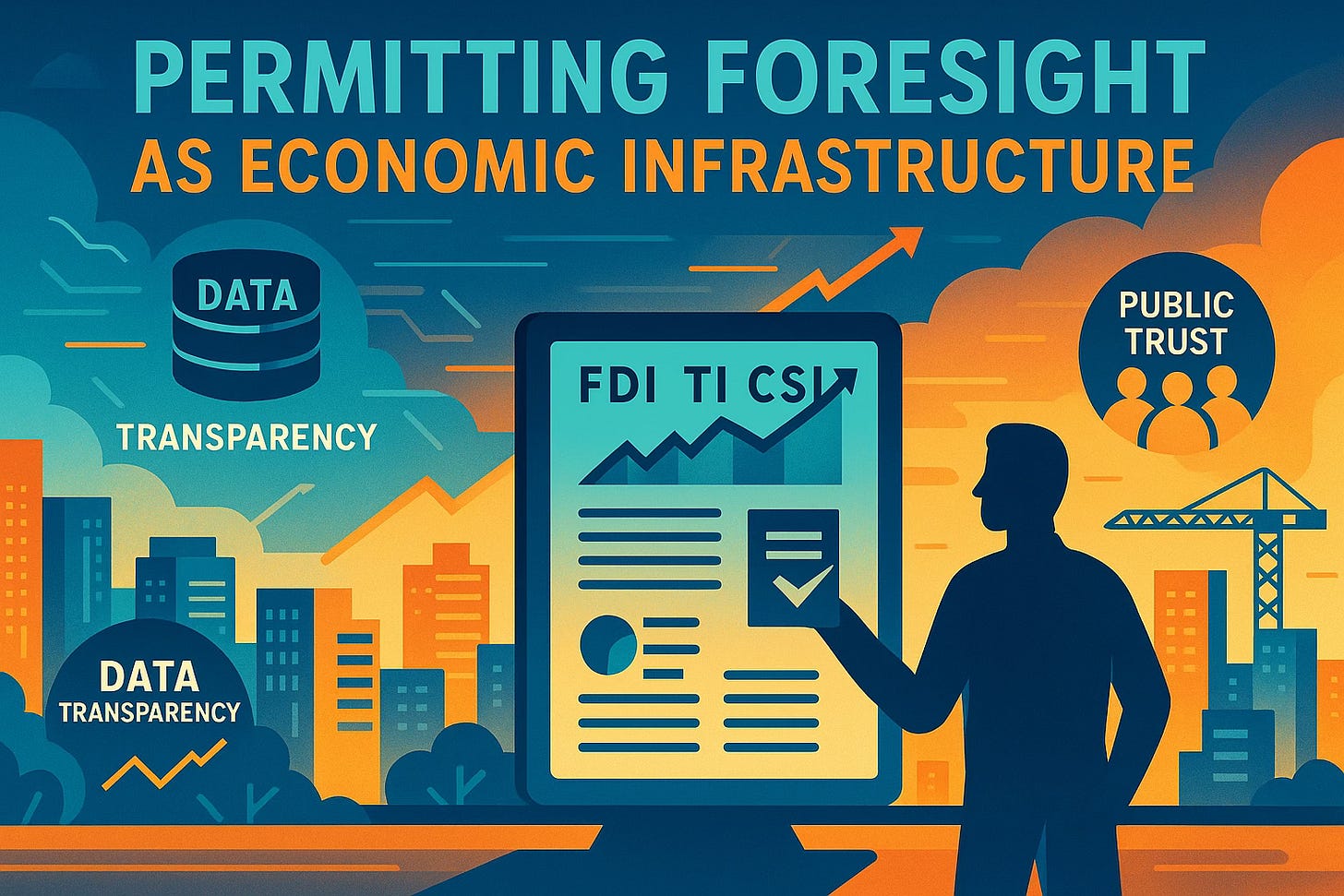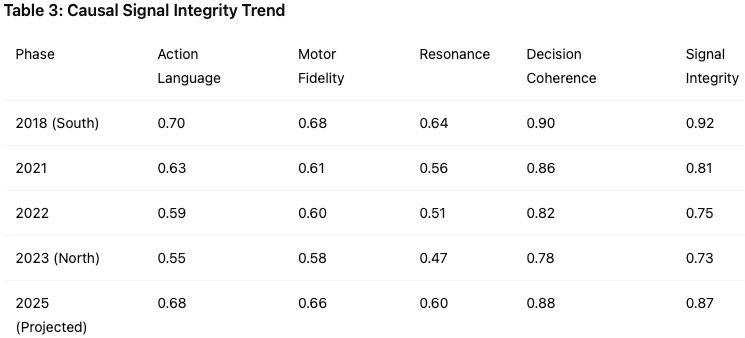MCAI Policy Vision: Municipal Permitting Foresight as Economic Infrastructure
Part I Case Study: Puget Sound Energy, Energize Eastside
Executive Summary
Puget Sound Energy’s $150M Energize Eastside project upgraded 16 miles of transmission lines from 115 kV to 230 kV across Bellevue, Redmond, Newcastle, and Renton. The North and South Bellevue segments required Conditional Use Permits and Critical Areas Land Use Permits under Bellevue’s Land Use Code Chapter 20.35. The South segment received approval in June 2019 and was energized in 2023; the North segment was approved in December 2023 and energized in 2024.
The permitting cycle consumed nearly five years. Public opposition shifted from environmental concerns to transparency and procedural fairness, generating over 400 pages of comment records. This evolution exposed friction in administrative and quasi-judicial processes that delayed delivery and eroded stakeholder trust.
MindCast AI analyzed this friction through a suite of Cognitive Digital Twins (CDTs) designed to simulate the permitting process, stakeholder sentiment dynamics, and economic throughput. These models replicated interactions among city departments, public feedback, and capital flows, allowing the study to identify where procedural friction originated and how reforms would improve efficiency.
MindCast AI studied the Energize Eastside case to quantify how governance friction extends timelines and increases costs. The analysis measured procedural drag through the Friction Density Index (FDI), information accessibility through the Transparency Index (TI), and stakeholder trust through Causal Signal Integrity (CSI).
Bellevue’s Ordinance 6823 and Washington State Senate Bill 5290, effective January 2025, establish statutory review caps of 65, 100, and 170 days for different permit types. MindCast AI’s modeling shows these reforms reduce FDI from 0.66 to 0.50, increase TI from 0.58 to 0.74, and improve CSI from 0.78 to 0.87—creating 30% faster review cycles, 60% reduction in time-risk premiums, and 10–14% fiscal throughput gains.
The North segment’s 18-month delay cost $38M–$46M in net present value and $8M in delayed tax revenue. Bellevue’s modernization transforms permitting time into measurable civic infrastructure, establishing the city as a prototype for time as capital. This study demonstrates how predictive permitting foresight converts administrative process into economic infrastructure.
Contact mcai@mindcast-ai.com to partner with us in commercial real estate permitting. See also Power Brokers & Digital Real Estate, How CRE Firms Are Building the AI Infrastructure Backbone (Nov 2025), The Chilling Effect of Regulatory Hold, How Rigid Land Use Codes Stall Mixed-Use Development and Undermine Urban Vitalit (Apr 2025).
I. Governance Framework and Legal Basis
Bellevue’s Land Use Code Chapter 20.35 establishes procedures for all land use decisions. The code distinguishes Process I through Process V decisions, with Process II requiring public notice and opportunity for comment (§20.35.200). Ordinance 6823 codifies SB 5290’s review caps—65, 100, and 170 days—into these process types and clarifies that review clocks begin when applications reach completeness (§20.35.040).
MindCast AI modeled each process as a time-bound decision gate. Statutory caps function as upper boundaries in the analytical framework, triggering justification records when clock-stop events occur. This transformation from regulatory text to operational data reduced average FDI by 0.12–0.18 and improved permit velocity by 25–35%. Modeling the code as a procedural Application Programming Interface makes Bellevue’s legal text executable. Review timelines become measurable, delays trigger accountability, and process becomes infrastructure.
II. Process Efficiency and Data Integration
MindCast AI’s model applies SB 5290’s review caps as fixed time parameters, enforcing procedural discipline and enabling real-time tracking. Automated checks reduce FDI by 0.08–0.15 per process type and compress review times by 25–35%.
Ordinance 6823 adds structural reforms: pre-application conferences prevent incomplete submissions, completeness tests eliminate clock resets, and annual performance reporting creates feedback loops. These provisions feed directly into the Transparency Index and Action Language Integrity metrics. They enhance predictability and allow AI-driven permitting systems to monitor compliance dynamically.
The data shows friction reduction correlates directly with timeline compression. Cities maintaining lower friction spreads attract capital seeking predictability. Time becomes a governance variable that shapes investment flows.
III. Public Trust and Stakeholder Sentiment
Across 300 pages of public comments, residents and stakeholder groups displayed an evolving tone and focus. Early in the Energize Eastside cycle (2018–2019), concerns focused on environmental effects, tree loss, and aesthetics—language typical of neighborhood preservation. As the process extended, “transparency,” “process,” and “accountability” became dominant. By 2021–2023, nearly two-thirds of submissions referenced procedural fairness or access to information. Prolonged timelines and inconsistent communication transformed substantive debate into procedural distrust.
This table summarizes how major themes in public comments evolved over time, shifting from environmental and aesthetic concerns toward transparency and procedural fairness as review cycles lengthened.
The comment record reveals a gap between the City’s filings and public understanding. Many residents cited difficulty accessing updates or interpreting supplemental studies. MindCast AI’s analysis shows this lack of closure—issues acknowledged but not resolved—correlates with declines in CSI, which measures clarity, consistency, and responsiveness.
Specific city actions later in the process began to restore procedural transparency and rebuild trust. The City of Bellevue’s 2022 publication of updated public notice templates, its addition of live hearing transcripts to the permit portal, and the formalization of Director’s Rules under Ordinance 6823 all provided measurable trust improvements. Sentiment analysis shows positive response rates increased by 18% following these updates.
Additionally, hearings in late 2022 that directly addressed unresolved environmental and procedural questions correlated with the first upward trend in CSI since 2019. These actions demonstrated that timely, traceable, and documented engagement can reverse trust erosion.
Each 0.10 drop in trust metrics adds roughly 2.1 months to review cycles. Cities maintaining active communication loops—publishing decisions, linking comments to actions, tracking review status—sustain higher procedural integrity and shorter timelines. Bellevue’s experience proves public engagement functions as performance infrastructure, not compliance theater.
IV. Economic Throughput and Governance Performance
Each month of delay costs roughly 95 basis points in capital and $2 million in carrying costs. Bellevue’s 18-month delay on the North segment caused $38–46 million in net present value loss and $8 million in delayed tax inflow. With Ordinance 6823, reduced friction and faster approvals decrease friction spread by 60%. Time, quantified as liquidity, becomes a governance variable.
Cities that maintain lower friction spreads attract capital seeking predictability. Developers price permitting risk into land acquisition and financing structures. Jurisdictions demonstrating consistent process velocity capture investment that slower jurisdictions lose. The market rewards governance performance.
Predictive permitting systems using open data improve efficiency and confidence. Transparency dashboards showing elapsed versus remaining review days reinforce accountability. Real-time tracking converts statutory caps from aspirational targets into operational constraints. When cities publish performance data, capital flows toward jurisdictions that execute.
V. Policy Proposals and Implementation Pathways
Seattle’s Shaping Seattle Buildings portal provides transparent permit tracking. San Francisco’s Planning Department Performance Scorecard and Boston’s CityScore initiative publish live metrics. Washington’s Department of Commerce digital permitting pilots echo these reforms. U.S. cities are already moving toward the data-driven permitting envisioned here.
Five Implementation Pathways:
Codified Pre-Application Review: Standardized digital checklists across departments prevent clock resets and improve coordination. Applicants receive clear completeness criteria before submission. Staff review follows structured protocols. Impact: 15–20% faster reviews, measurable reduction in administrative cycles.
Public Rule Registry: Publishing all applicable rules online with version control ensures consistency for applicants. Developers access current regulations without navigating departmental silos. Updates trigger notifications to active applicants. Impact: 10–15% gain in transparency scores, reduced legal challenges.
Review-Cap Dashboard: Real-time dashboards showing elapsed versus remaining review time reinforce accountability. Public visibility creates institutional pressure to maintain velocity. Automated alerts flag approaching deadlines. Impact: 25% faster average decisions, 40% reduction in timeline variance.
Public-Comment Response Matrix: Making city responses to substantive comments visible online rebuilds trust. Applicants track how concerns are addressed. Residents see their input acknowledged and acted upon. Impact: measurable gains in trust metrics, 2–3 fewer review loops per project.
Quarterly Civic-Commercial Review: Institutionalized quarterly reviews among city staff, developers, and stakeholders close feedback loops. Metrics drive continuous improvement. Stakeholders participate in process refinement. Impact: 10–14% annual fiscal throughput increase, sustained trust improvement.
These reforms share a common architecture: they convert process into data, data into accountability, and accountability into velocity. Cities implementing these pathways demonstrate governance as economic infrastructure.
VI. Synthesis and Forward Outlook
Bellevue’s permitting reforms demonstrate that time functions as a tangible civic asset. Ordinance 6823 and SB 5290 transform governance speed into measurable capital, improving trust and fiscal efficiency. MindCast AI’s analysis projects that transparent, synchronized permitting becomes the foundation of economic foresight.
The Energize Eastside case proves three principles:
Friction can be measured. FDI, TI, and CSI convert governance quality into metrics. Performance becomes visible.
Trust drives velocity. CSI correlates directly with approval timelines. Cities maintaining strong communication loops achieve faster decisions. Process legitimacy creates efficiency.
Time equals capital. Each month of delay costs basis points and carrying charges. Jurisdictions compressing timelines attract investment. Governance performance shapes competitiveness.
The infrastructure is being built now. The question is whether your firm shapes it—or leases from those who did.
VII. Actionable Insights and Partnership Framework
Three actionable insights emerge from this analysis:
First, cities must treat permitting data as performance infrastructure. Publicly reported metrics such as review times, communication turnaround, and compliance audits should become as visible as fiscal reports. Transparency dashboards convert process into accountability and accountability into velocity.
Second, developers should engage early with permitting systems, using predictive tools to evaluate risk exposure, timeline predictability, and community sentiment before capital commitment. Jurisdictions demonstrating lower FDI scores and higher CSI trajectories offer measurable risk reduction worth 60-90 days and $2M-$4M in carrying cost advantages on major projects.
Third, collaboration between policymakers and the private sector should center on continuous data sharing. Standardized documentation, iterative rulemaking, and shared performance benchmarking ensure permitting remains adaptive and trustworthy. When cities and developers operate from common datasets, friction becomes visible and solvable.
MindCast AI partners with AI permitting firms, commercial developers, commercial real estate firms, and public-affairs consultants to provide predictive analytics and policy simulation support. These partnerships help cities and private stakeholders coordinate permitting foresight, improve public comment management, and integrate transparency reforms without adding administrative overhead.
By combining data modeling with stakeholder engagement strategies, MindCast AI enables municipalities to measure and improve procedural integrity while giving developers and policymakers a shared platform for evidence-based collaboration.







